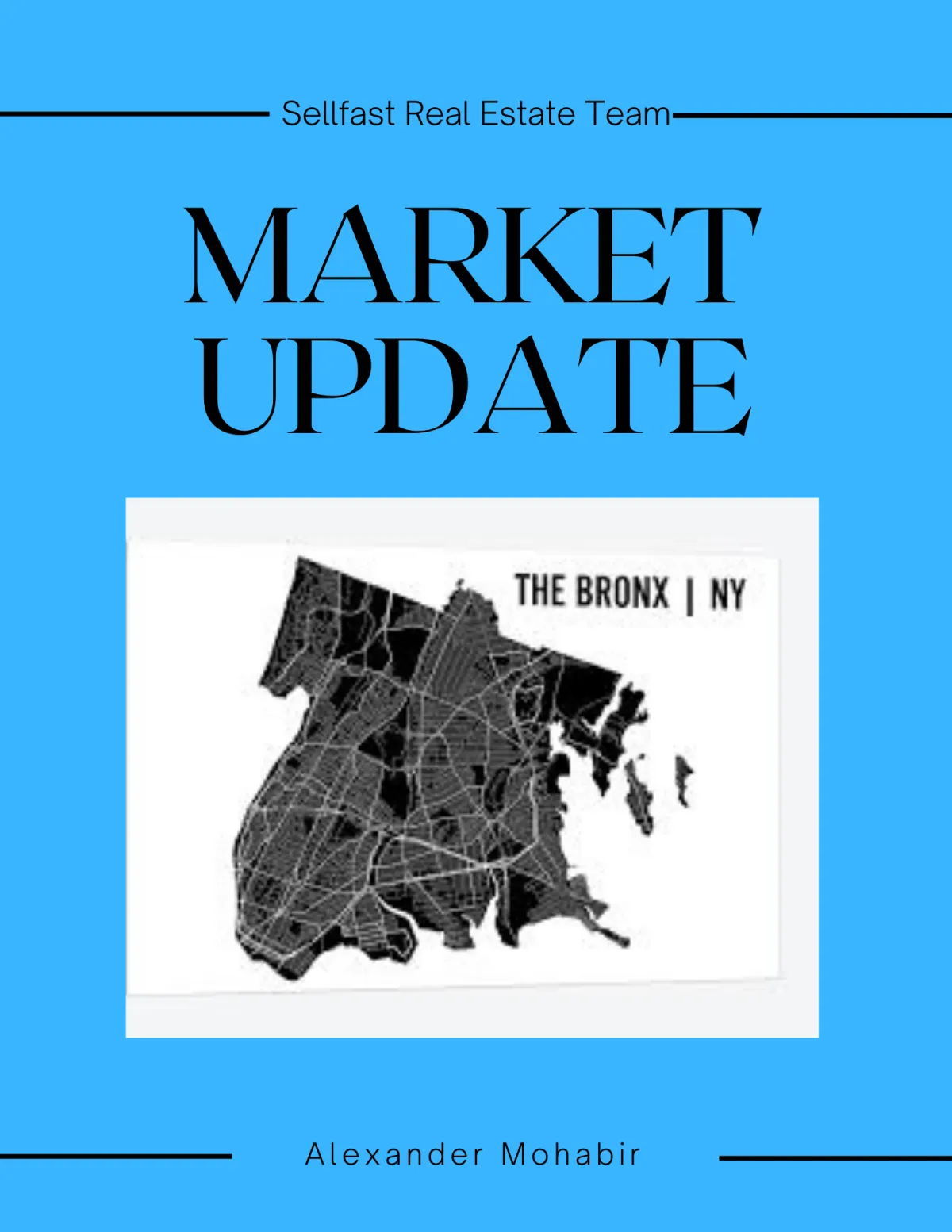Seller Library

Bronx Single Family Housing Market Update: A Year in Review
“I would encourage you: be informed - knowledge is power.” - Matt Bevin
As a Realtor, keeping your finger on the pulse of the real estate market is crucial for providing valuable insights to your clients. In this blog post, we will delve into the current trends in Bronx's single-family housing market, focusing on two key factors: active inventory and median sold prices for the past 12 months.
By understanding these trends, you can offer informed guidance to potential buyers and sellers. We will also explore the intriguing interplay between inventory levels and median sold prices.
Trend 1: Declining Active Inventory

Over the past 12 months, the Bronx single-family housing market has witnessed a notable decline in active inventory. This is a significant trend, indicating a reduced number of available properties for prospective buyers. While limited inventory can create a competitive environment for buyers, it also suggests a strong demand in the market.
Trend 2: Median Sold Prices on the Rise

In contrast to the declining inventory, median sold prices in the Bronx single-family housing market were on an upward trajectory. This indicated that, despite limited options, buyers were willing to pay more for the available properties. The demand for single-family homes in the Bronx seemed to be robust.
Recent Shift: Decrease in Median Sold Prices
However, the market saw a slight shift in the past month, with a decrease in median sold prices. This change could be attributed to a variety of factors, such as seasonal fluctuations, rise in mortgage interest rates, changes in buyer preferences, or broader economic conditions. As a realtor, it's important to keep a close eye on these changes to adapt your strategies accordingly.
The Interplay Between Inventory and Prices

The relationship between inventory levels and median sold prices is fascinating. Here's how they can affect each other:
Low Inventory, Rising Prices: When inventory is scarce, buyers face increased competition for the limited available properties. This competition can drive up prices, as prospective buyers are willing to pay a premium to secure a home. For sellers, this can be an advantageous situation.
High Inventory, Stable or Lower Prices: Conversely, when inventory is abundant, buyers have more options to choose from. This can lead to more price stability or even slight reductions as sellers may need to adjust their prices to attract buyers in a competitive market.
Shifts in Inventory Impact Prices: As seen in the recent decrease in median sold prices, a change in inventory levels can influence prices. When inventory increases, prices may stabilize or dip, as sellers face competition, forcing them to be more competitive in their pricing.
Conclusion
Understanding the Bronx single-family housing market's current trends in active inventory and median sold prices is essential for any realtor. These insights can help you provide informed advice to your clients, whether they are buyers or sellers. Keep a close eye on the market, as it's dynamic and can change rapidly. By staying up-to-date, you can continue to offer valuable guidance and assist your clients in making sound real estate decisions.
Buyer Library

Bronx Single Family Housing Market Update: A Year in Review
“I would encourage you: be informed - knowledge is power.” - Matt Bevin
As a Realtor, keeping your finger on the pulse of the real estate market is crucial for providing valuable insights to your clients. In this blog post, we will delve into the current trends in Bronx's single-family housing market, focusing on two key factors: active inventory and median sold prices for the past 12 months.
By understanding these trends, you can offer informed guidance to potential buyers and sellers. We will also explore the intriguing interplay between inventory levels and median sold prices.
Trend 1: Declining Active Inventory

Over the past 12 months, the Bronx single-family housing market has witnessed a notable decline in active inventory. This is a significant trend, indicating a reduced number of available properties for prospective buyers. While limited inventory can create a competitive environment for buyers, it also suggests a strong demand in the market.
Trend 2: Median Sold Prices on the Rise

In contrast to the declining inventory, median sold prices in the Bronx single-family housing market were on an upward trajectory. This indicated that, despite limited options, buyers were willing to pay more for the available properties. The demand for single-family homes in the Bronx seemed to be robust.
Recent Shift: Decrease in Median Sold Prices
However, the market saw a slight shift in the past month, with a decrease in median sold prices. This change could be attributed to a variety of factors, such as seasonal fluctuations, rise in mortgage interest rates, changes in buyer preferences, or broader economic conditions. As a realtor, it's important to keep a close eye on these changes to adapt your strategies accordingly.
The Interplay Between Inventory and Prices

The relationship between inventory levels and median sold prices is fascinating. Here's how they can affect each other:
Low Inventory, Rising Prices: When inventory is scarce, buyers face increased competition for the limited available properties. This competition can drive up prices, as prospective buyers are willing to pay a premium to secure a home. For sellers, this can be an advantageous situation.
High Inventory, Stable or Lower Prices: Conversely, when inventory is abundant, buyers have more options to choose from. This can lead to more price stability or even slight reductions as sellers may need to adjust their prices to attract buyers in a competitive market.
Shifts in Inventory Impact Prices: As seen in the recent decrease in median sold prices, a change in inventory levels can influence prices. When inventory increases, prices may stabilize or dip, as sellers face competition, forcing them to be more competitive in their pricing.
Conclusion
Understanding the Bronx single-family housing market's current trends in active inventory and median sold prices is essential for any realtor. These insights can help you provide informed advice to your clients, whether they are buyers or sellers. Keep a close eye on the market, as it's dynamic and can change rapidly. By staying up-to-date, you can continue to offer valuable guidance and assist your clients in making sound real estate decisions.




